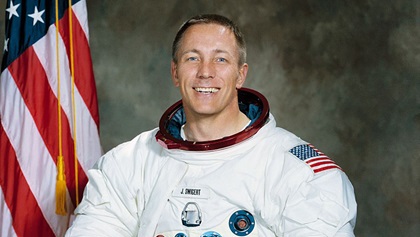Milestones: Extraordinary times
Apollo at 50
By Alicia Herron
In July, the National Aeronautics and Space Administration celebrates the fiftieth anniversary of Apollo 11’s lunar landing.

From those first steps on the moon to the space shuttle program and the planned journey to Mars, NASA’s exceptional achievements have inspired humanity to look beyond the limits of Earth’s atmosphere. But NASA’s work is about more than space. Included in the agency’s establishing document, the Space Act of 1958, is a provision that NASA’s work should benefit all mankind. So far, it has.
NASA’s “spinoffs” to society—technology developed for NASA’s unique missions but beneficial and applicable to the wider world—go far beyond astronaut ice cream and memory foam mattresses. Aeronautics is part of its name, so it should come as no surprise that NASA’s research and development has directly improved general aviation.
In the late 1980s, NASA’s Langley Research Center studied wing design to develop high-efficiency civil aviation wings that could land and take off in shorter distances and stall at a lower airspeed. This research has been used in the development of short takeoff and landing (STOL) aircraft and in STOL kits. Engineers at Langley also helped develop the space shuttle.
The Ames Research Center, which helps provide software expertise to the International Space Station, developed a system to plan airliner flights more efficiently. This concept was the basis for the first-generation flight management systems (FMS). As flight management systems became more widespread, general aviation’s sophisticated on-board technology followed.
In the 1970s and 1980s, the number of stall-spin accidents was higher than it is today. At that time, NASA began the General Aviation Spin Program, which used extensive testing to develop guidelines for designing more spin-resistant aircraft. The Spin Program’s work has led to more stable aircraft today and safer designs for the future—the Icon A5 is a notable product of that research.
These are just a few examples of NASA’s contributions. NASA has always accepted challenges that press the limits of what is possible. As President John F. Kennedy said in his speech at Rice University in 1962: “We choose to go to the moon in this decade and do the other things, not because they are easy, but because they are hard.”
For what you’ve done so far and for what is yet to come: Thanks, NASA.
Alicia Herron is an aviation writer for the AOPA Air Safety Institute.
 “Houston, we have a problem,” is probably the second most famous quote from the history of American space flight. Neil Armstrong’s “That’s one small step for [a] man, one giant leap for mankind,” would have to be the first.
“Houston, we have a problem,” is probably the second most famous quote from the history of American space flight. Neil Armstrong’s “That’s one small step for [a] man, one giant leap for mankind,” would have to be the first.

